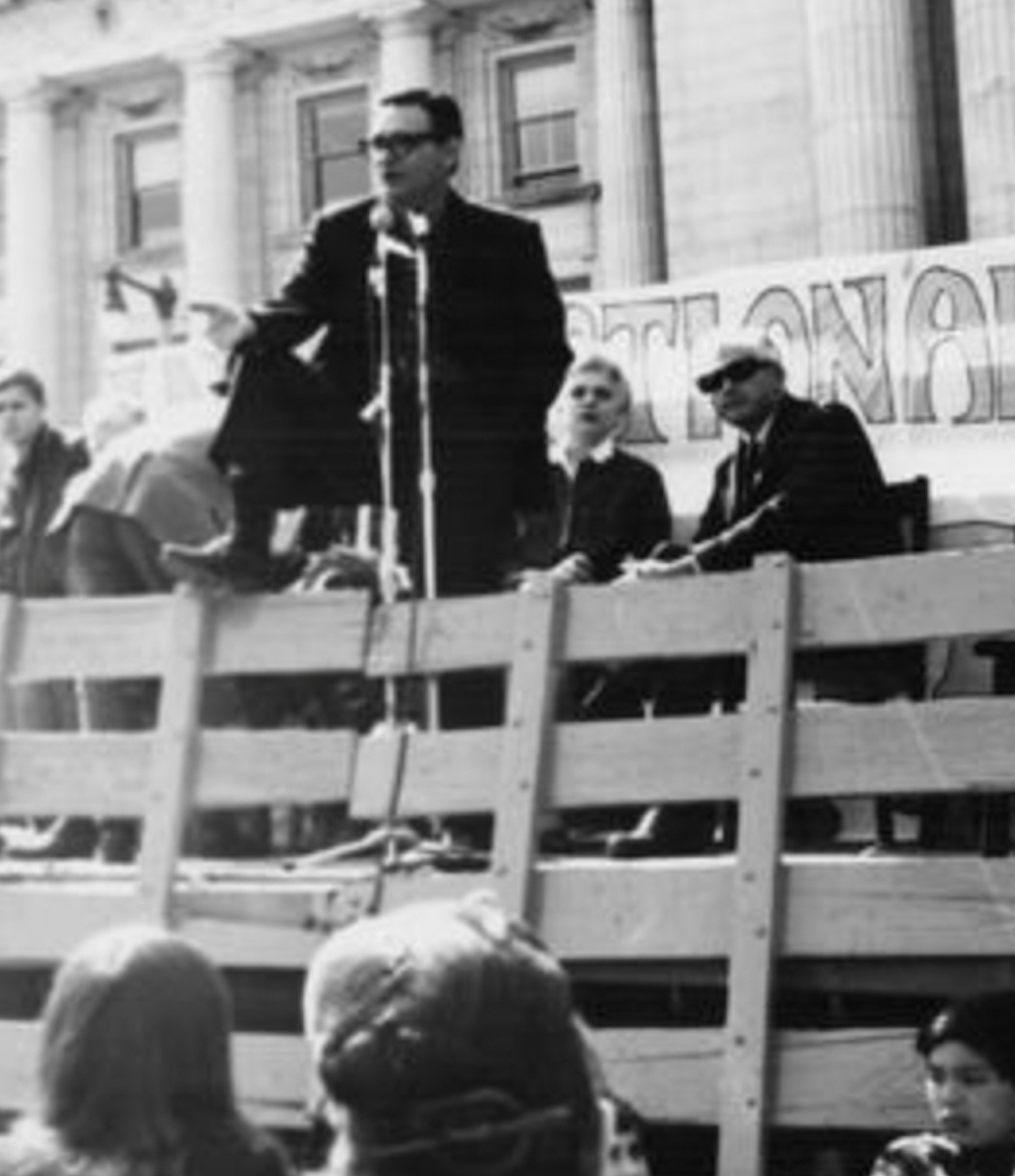By Lynn Burnett
Image: Jack Minnis, on platform speaking before a crowd.
Jack Minnis was the creator and director of the Student Nonviolent Coordinating Committee’s research department. He was a “crusty older white guy,” in the words of one of his SNCC comrades, “who smoked like a fiend, looked generally unkempt, and could get research from a turnip.” He was also a highly sought after lawyer, especially by D.C. think tanks, but he had chosen SNCC. Jack ran with ideas when they came up: one day when a fellow SNCC worker was pouring out some thoughts, Jack stopped him cold. He started “bellowing to various staff members that he wanted to have an executive meeting right then at that time and got up from his desk and gave me a hug that came close to breaking my back,” because apparently something in the flow of thoughts had struck Jack as brilliant. If research departments were the kinds of things that became legendary, SNCC’s research department would have had a legendary status. As Minnis recalled, “we had a research department either the DNC or RNC would have been proud of.” It was through that department that essential information was channeled to SNCC workers in the field, allowing them to be highly effective community organizers.
Part of Jack’s work was uncovering the stakeholders in the power structures that opposed SNCC’s civil rights work. For example, if plantation owners mobilized their local political power against a SNCC campaign, Jack Minnis would track down which corporations or major stockholders across the country had financial interests in the plantation. The majority stockholder of one plantation, he discovered, was the Queen of England, but more typically it would be a major U.S. corporation that didn’t want to be seen as supporting segregationist efforts. Such information was effectively leveraged by SNCC to put outside political and financial pressure on the Southern power structure at war with the civil rights movement.
Another task of the department led by Jack was researching the local legal systems of the counties and cities SNCC worked in. As Stokely Carmichael recalls, “I asked Jack Minnis to check out the laws on independent parties in Alabama . . . In less than a week he called back.” Based on an obscure Reconstruction-era law Jack discovered, Stokely initiated an independent Black political party in the primarily Black Lowndes Country. The Lowndes County Freedom Party began running Black candidates for everything from the sheriff to school board members. It was one of the major moments in the trajectory towards Black Power.
Jack’s example also impacted SNCC workers in other ways. As Bruce Hartford recalled, “Jack had the facts and he [laid] them out for all to see, and that did more to radicalize me than any fiery speech.” SNCC worker Judy Richardson – who later produced Eyes on the Prize – recalled being impacted by the way Jack organized his research in such a detailed yet concise fashion: his example helped her organize material for her famous documentary… as well some of her own research about police brutality in New York City.
After SNCC became an all-Black organization, the “crusty older white guy” retreated to a wooded cabin with other White SNCC comrades, finished off a bottle of Jack Daniels, and felt sad, but not bitter. And then SNCC called him. He couldn’t be on staff anymore, but they needed his research skills. So did groups like GROW, which had been founded by White SNCC workers to organize White southerners for racial and economic justice. Jack Minnis got back to work.
Additional Resources
Civil Rights Movement Veterans: Memories of Jack Minnis.
Digital SNCC Gateway:
Jack Minnis:
Wikipedia entry.
